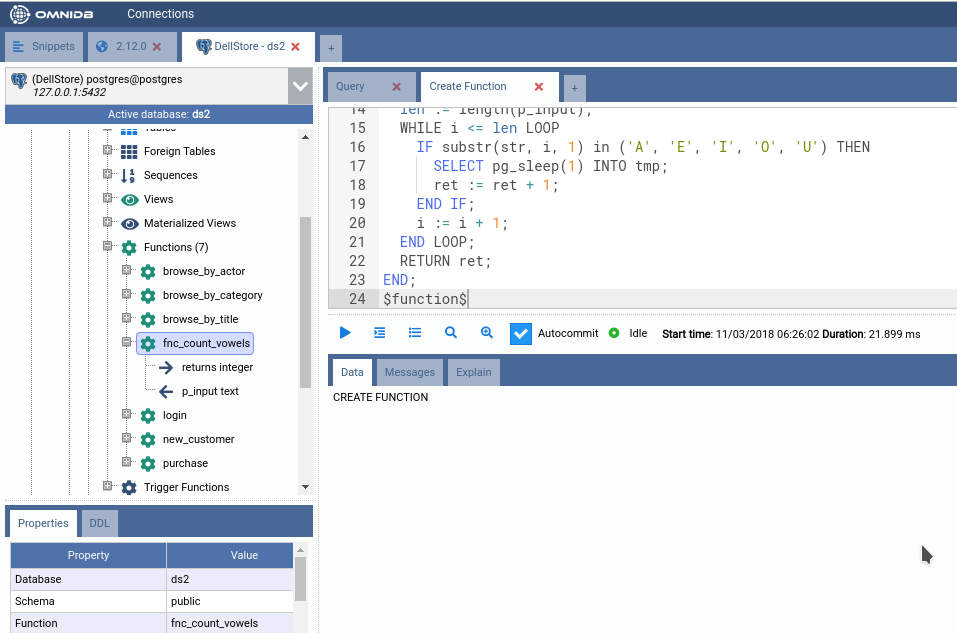

- POSTGRESQL CREATE DATABASE FROM COMMAND LINE HOW TO
- POSTGRESQL CREATE DATABASE FROM COMMAND LINE PASSWORD
: the name of the database that you want to create, which in my example was “amit”. Once again let’s take a look at the command that was passed at the psql prompt::ĬREATE DATABASE: This is the SQL syntax used to initiate the request for creating the database. If CREATE DATABASE is returned, then it has successfully created the database for you. Similar to creating a user, creating a database is very easy:: postgres=# create database amit There are several other options available, which you can find at the following link. pgpass file while trying to run scripts.)
POSTGRESQL CREATE DATABASE FROM COMMAND LINE PASSWORD
w -no-password: the user will not need to enter a password when connecting. P -pwprompt: this will prompt the user to change the password on their first attempt to log in s -superuser: whether you want to make the user a superuser (a user without restrictions)

: the next step is to provide the username that you are trying to create.įollowing the username, you can specify the privileges that you want to grant to the new user. Let’s begin with the formatting for the command:ĬREATE USER: This is the SQL syntax that is used to initiate the request for creating the user. There are a few useful options that can be used while creating the user. If you are interested in learning more, you can read the documentation at the following link. The reason the command success is returned as CREATE ROLE is that Postgres does not differentiate between a role and a user. In PostgreSQL, a user can easily be created using the CREATE USER command : postgres=# create user amit We will go through the steps for both psql and pgAdmin in order to ensure that you do not get stuck if you are using one or the other. This will help us in eliminating the need for reinstallation, if we mess up the default set of databases or users that already exist, while trying to learn and build our understanding. While working with PostgreSQL the two basic requirements is to create a database and set up a few users. The pg_dump command provides several options that help you to specify tables or schemas to back up.SUMMARY: This article covers the steps for creating new databases and users in PostgreSQL using both psql and pgAdmin: The pg_dump is a command-line tool that allows you to dump the content of a specified database into a single file. Export a PostgreSQL Database with pg_dump Command
POSTGRESQL CREATE DATABASE FROM COMMAND LINE HOW TO
In this post, we will show you how to import and export a PostgreSQL database using pg_dump, pg_dumpall, psql, and pg_restore utility. So it is essential to implement a backup strategy to protect against data loss. When working on a different project in different environments, you often need to export a database dump from one server and import it into another server. PostgreSQL provides pg_dump and a pg_dumpall command-line utility to effectively backup your important information. Backups will help you to recover your system in the event of database corruption. It is an essential component of a data storage plan. Backing up PostgreSQL data is one of the most important tasks for any database administrator. PostgreSQL is the modern and most popular database management system now a day.


 0 kommentar(er)
0 kommentar(er)
